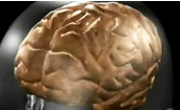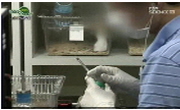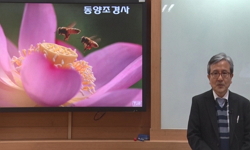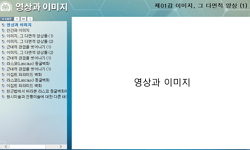서울시와 우즈베키스탄(Uzbekistan)의 수도 타슈켄트(Tashkent)시는 2010년 7월에 자매도시협정을 맺고, 타슈켄트 내에 서울공원을 조성하기로 결정하였다. 이후 이를 위한 현상 설계 공모를 2012년 ...
http://chineseinput.net/에서 pinyin(병음)방식으로 중국어를 변환할 수 있습니다.
변환된 중국어를 복사하여 사용하시면 됩니다.
- 中文 을 입력하시려면 zhongwen을 입력하시고 space를누르시면됩니다.
- 北京 을 입력하시려면 beijing을 입력하시고 space를 누르시면 됩니다.

타슈켄트 서울공원 설계과정에서 구현된 한국정원 설계요소 고찰 = A Study of the Implemented Korean Traditional Garden Design Elements on Tashkent Seoul Park
한글로보기https://www.riss.kr/link?id=A102307562
-
저자
신현돈 (서안알앤디 디자인(주)) ; Shin, Hyun-Don
- 발행기관
- 학술지명
- 권호사항
-
발행연도
2015
-
작성언어
Korean
- 주제어
-
등재정보
KCI우수등재
-
자료형태
학술저널
- 발행기관 URL
-
수록면
40-54(15쪽)
-
KCI 피인용횟수
2
- DOI식별코드
- 제공처
-
0
상세조회 -
0
다운로드
부가정보
국문 초록 (Abstract)
서울시와 우즈베키스탄(Uzbekistan)의 수도 타슈켄트(Tashkent)시는 2010년 7월에 자매도시협정을 맺고, 타슈켄트 내에 서울공원을 조성하기로 결정하였다. 이후 이를 위한 현상 설계 공모를 2012년 치렀으며, 이때 당선된 작품을 기반으로 하여 2014년 6월 준공 후, 같은 해 9월에 개장하였다. 본 연구에서는 현상 설계 당시의 고민에서부터 아이디어가 실제 설계에 반영되어 준공되기까지 제 전반의 사항들을 한국정원 설계요소들을 중심으로 살펴본다. 타슈켄트 서울공원은 단순히 타슈켄트 내의 공공 공원으로서의 역할을 넘어 해외에 조성된 한국 전통 정원의 새로운 효시가 될 수 있는 곳으로 조성코자 하는데 주안점을 두었다. 지금까지 외국에 조성된 한국정원과 공원들이 대부분 조선시대에 초점을 맞추어 재현했던 한계를 벗어나, 타슈켄트 서울공원은 17만 명 고려인들이 우즈베키스탄에 머무르고 있는 것을 감안하여 옛 고려의 문화와 정취를 느낄 수 있는 공간이 될 수 있도록 하였다. 선행 연구를 통해 한국성 재현을 위한 디자인 요소들을 도출하였으며, 여기에는 고려시대의 정원 요소뿐 아니라, 고려인들 외에 현지인들이 보편적인 한국 전통정원을 체험할 수 있도록 조선시대의 재현 요소들도 재해석하여 함께 설계에 반영하였다. 중앙아시아에 한국의 전통미와 서정성이 담긴 공간을 구현하여 타슈켄트시 현지인들에게 우리문화의 단아하고 소박한 풍경을 느끼도록 하였다. 서울공원의 스토리텔링의 공간경험은 두 가지 시점으로 전개된다. 첫째, 고려인과 외국인의 시점으로 전개되는 공간경험으로써, 서정적이고 다원적인 공간구조를 지나면서 체험하는 경관의 단서들을 통해 고향, 한국의 정취를 더듬어 나가는 연속적 경관 체험의 장이다. 둘째, 타슈켄트 시민을 비롯한 이방인들의 시점에서 전개되는 경험으로써, 낯선 경관에서 느끼는 새로움, 지형과 경관을 다루는 다양한 기법 및 자세를 읽고, 과거 실크로드를 통해 동아시아와 교역을 이루었던 것처럼 한국정원에서 한국문화와 교감을 하며, 우리의 정서를 느끼는 스토리텔링과정으로 설정하였다. 외국도시에 조성되는 한국정원 및 공원은 단순한 조경공간으로서의 의미를 넘어, 외국인들에게 대한민국의 이미지와 '한국'의 문화를 널리 알리는 첨병 역할을 한다. 타슈켄트 서울공원 역시 이를 통해 대한민국과 수도서울의 이미지를 쉽게 알릴 수 있도록 한국 전통조경의 아름다움과 독창성을 반영하여 설계하였다. 더불어 우즈베키스탄 경관과의 차별성을 나타낼 수 있는 디자인, 현지인들에게 한국문화를 알릴 수 있는 계획안을 도출하는데 중점을 뒀다. 타슈켄트 서울공원은 현 시점에서 외국에 조성된 '한국정원'의 가장 최근 사례이다. 따라서 이에 대한 설계 전략과 내용에 대한 연구를 통해 외국 도시에 조성되고 있는 한국정원에서의 한국성의 재해석 과정과 설계 요소 도출에 대한 고민과 과정을 살펴볼 수 있으리라 사료된다.
다국어 초록 (Multilingual Abstract)
Tashkent Seoul Park was completed in June, 2014, following the signing of a sisterhood relationship between Seoul City and Tashkent, the capital of Uzbekistan in July, 2010. An open competition for the design of the park was held and, based on the des...
Tashkent Seoul Park was completed in June, 2014, following the signing of a sisterhood relationship between Seoul City and Tashkent, the capital of Uzbekistan in July, 2010. An open competition for the design of the park was held and, based on the design, the park was completed in June and open to the public in September, 2014. Tashkent Seoul Park is more than a public park in Tashkent. The focus was on making it a starting point for offering a new model for traditional parks of Korea built abroad. Korean gardens and parks built in overseas cities are not only a landscape space but also serve as an ambassador that promotes the culture of Korea to foreigners who are unfamiliar with Korean culture. Therefore, Tashkent Seoul Park was designed to reflect the beauty and uniqueness of Korean traditional landscaping to promote the image of Korea and Seoul. As such, the design and plan was focused on the best measures to make known Korean culture through a design that sets itself apart from the landscape of Uzbekistan. To date, Korean parks or Seoul parks that have been built overseas have focused on the re-enactment of gardens and parks during the Josun Dynasty era. But with the Tashkent Park, the process of the 170,000 people from Goryeo was also reflected onto the design so that the culture and sensibilities of old Goryeo could be felt as well. Korean traditional garden design elements for the representation of the Korean identity are taken from the pilot study. This design element includes not only that of Goryeo, but also the Josun Dynasty era to allow local people to experience a general Korean traditional garden. The traditional beauty and lyricism of Korea was presented to Central Asia through the park in Tashkent so that the citizens could feel the simple yet down-to-earth beauty of Korean aesthetics. As such, the spatial experience of story-telling in Seoul Park evolves from two points of view. First, it is a spatial experience from the perspective of the Goryeo period and of foreigners. It is a continuum of a landscape experience where one can trace the sentiments of Korea and a hometown in Korea by passing through lyrical and multi-faceted spatial structures. Second, it is an experience that evolves from the viewpoint of an outsider, including the Tashkent citizens. It allows visitors to read the various methods and attitudes in an unfamiliar landscape and terrain. Through a story-telling that is reminiscent of the Silk Road through which trade with East Asia took place, visitors can interact with Korean culture in the Korean Garden and throughout the process they can feel the very Korean sentiments. This park presents the latest example of a 'Korean Garden' formed overseas and thus presents a clue to understanding the representation pattern of the Korean aspects of Korean Gardens through a study on the design strategies.
참고문헌 (Reference)
1 박은영, "한국전통정원의 해외 조성 현황 및 문제점 양상" 한국전통조경학회 31 (31): 75-82, 2013
2 권진욱, "한국전통정원 해외조성을 위한 정원보급 유형 제안- 공공 공간에 적용될 정원을 대상으로 -" 한국전통조경학회 31 (31): 106-113, 2013
3 Collingwood. G. E., "예술의 원리" 형설출판사 1982
4 Seoul Metropolitan Government, "The guideline for Design of Tasukent Seoul Park competition"
5 Davis, M., "The Politics of Philosophy: A Commentary on Aristotle’s Politics" Rowman & Littlefield 1996
6 Seo-Ahn RnD Design Group, "The Planning for Korea-Type Outdoor Facilities" 한국토지주택공사 2012
7 Shin, H. D., "Tashkent Seoul Park, Seoul Byeolseo" (315) : 46-53, 2014
8 Korea Institute of Traditional Landscape Architecture, "Suggestions on the Standard and assistance model for the Overseas Establishment of Traditional Korean Gardens" Presidential Commission on Architecture Policy 2014
9 Shin, H. D., "Korea landscape architecture-from Silk Road to South America" (97) : 6-7, 2015
10 "Korea Institute of Traditional Landscape Architecture"
1 박은영, "한국전통정원의 해외 조성 현황 및 문제점 양상" 한국전통조경학회 31 (31): 75-82, 2013
2 권진욱, "한국전통정원 해외조성을 위한 정원보급 유형 제안- 공공 공간에 적용될 정원을 대상으로 -" 한국전통조경학회 31 (31): 106-113, 2013
3 Collingwood. G. E., "예술의 원리" 형설출판사 1982
4 Seoul Metropolitan Government, "The guideline for Design of Tasukent Seoul Park competition"
5 Davis, M., "The Politics of Philosophy: A Commentary on Aristotle’s Politics" Rowman & Littlefield 1996
6 Seo-Ahn RnD Design Group, "The Planning for Korea-Type Outdoor Facilities" 한국토지주택공사 2012
7 Shin, H. D., "Tashkent Seoul Park, Seoul Byeolseo" (315) : 46-53, 2014
8 Korea Institute of Traditional Landscape Architecture, "Suggestions on the Standard and assistance model for the Overseas Establishment of Traditional Korean Gardens" Presidential Commission on Architecture Policy 2014
9 Shin, H. D., "Korea landscape architecture-from Silk Road to South America" (97) : 6-7, 2015
10 "Korea Institute of Traditional Landscape Architecture"
11 "Korea Database Agency"
12 Hunt, J. D., "Greater Perfections: The Practice of Garden Theory" University of Pennsylvania Press 2000
13 Seoul Metropolitan Government, "Design Development and Construction Documen for Tashkent Seoul Park"
14 Sim, W. K., "A study on the culture of landscape architecture during the Koryo Kingdom and the characteristic of Moonsuwon" (23) : 165-171, 2004
15 Kim. S. W., "A study on the culture of landscape architecture during the Koryo Kingdom" 1 (1): 1-5, 1998
16 Kim. S. W., "A study of traditional Korean landscape architecture" 13 (13): 139-159, 1995
17 Chung, S. H., "A cross-cultural comparisons for landscape preference on Korean traditional garden" 23 (23): 104-112, 1995
18 Jung, I. H., "A Study on the Improvement Program for the Tradition of Korean Garden in the Foreign Cities" University of Seoul 2010
19 Lee, S. H., "A Study on the Expression of Traditional Design Elements in the Korean Garden: A Case Study of Overseas Traditional Gardens" Hanyang University 2005
동일학술지(권/호) 다른 논문
-
유원지 주변 산책로의 환경개선을 위한 이용만족도 결정요인 분석 - 대구광역시 수성유원지를 대상으로 -
- 한국조경학회
- 김동석
- 2015
- KCI우수등재
-
- 한국조경학회
- 김정호
- 2015
- KCI우수등재
-
조경용 차양막 재료의 명도가 하절기 옥외공간의 평균복사온도에 미치는 영향
- 한국조경학회
- 이춘석
- 2015
- KCI우수등재
-
- 한국조경학회
- 최우영
- 2015
- KCI우수등재
분석정보
인용정보 인용지수 설명보기
학술지 이력
| 연월일 | 이력구분 | 이력상세 | 등재구분 |
|---|---|---|---|
| 2020 | 평가예정 | 계속평가 신청대상 (등재유지) | |
| 2015-01-01 | 평가 | 우수등재학술지 선정 (계속평가) | |
| 2011-01-01 | 평가 | 등재학술지 유지 (등재유지) |  |
| 2009-01-01 | 평가 | 등재학술지 유지 (등재유지) |  |
| 2007-01-01 | 평가 | 등재학술지 유지 (등재유지) |  |
| 2005-05-20 | 학술지명변경 | 외국어명 : 미등록 -> Journal of the Korean Institute of Landscape Architecture |  |
| 2005-01-01 | 평가 | 등재학술지 유지 (등재유지) |  |
| 2002-07-01 | 평가 | 등재학술지 선정 (등재후보2차) |  |
| 2000-01-01 | 평가 | 등재후보학술지 선정 (신규평가) |  |
학술지 인용정보
| 기준연도 | WOS-KCI 통합IF(2년) | KCIF(2년) | KCIF(3년) |
|---|---|---|---|
| 2016 | 0.74 | 0.74 | 0.78 |
| KCIF(4년) | KCIF(5년) | 중심성지수(3년) | 즉시성지수 |
| 0.76 | 0.74 | 1.022 | 0.14 |




 ScienceON
ScienceON





